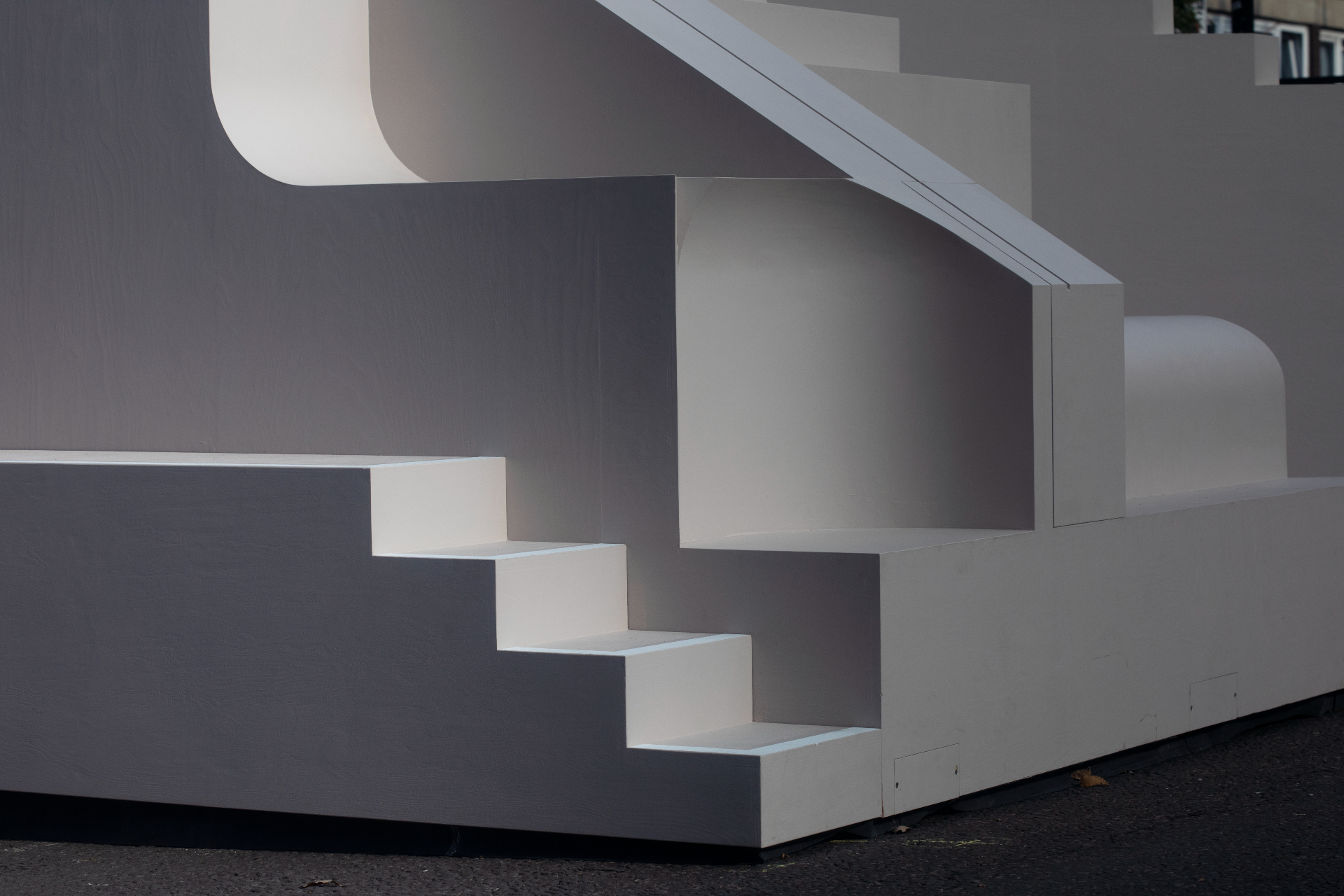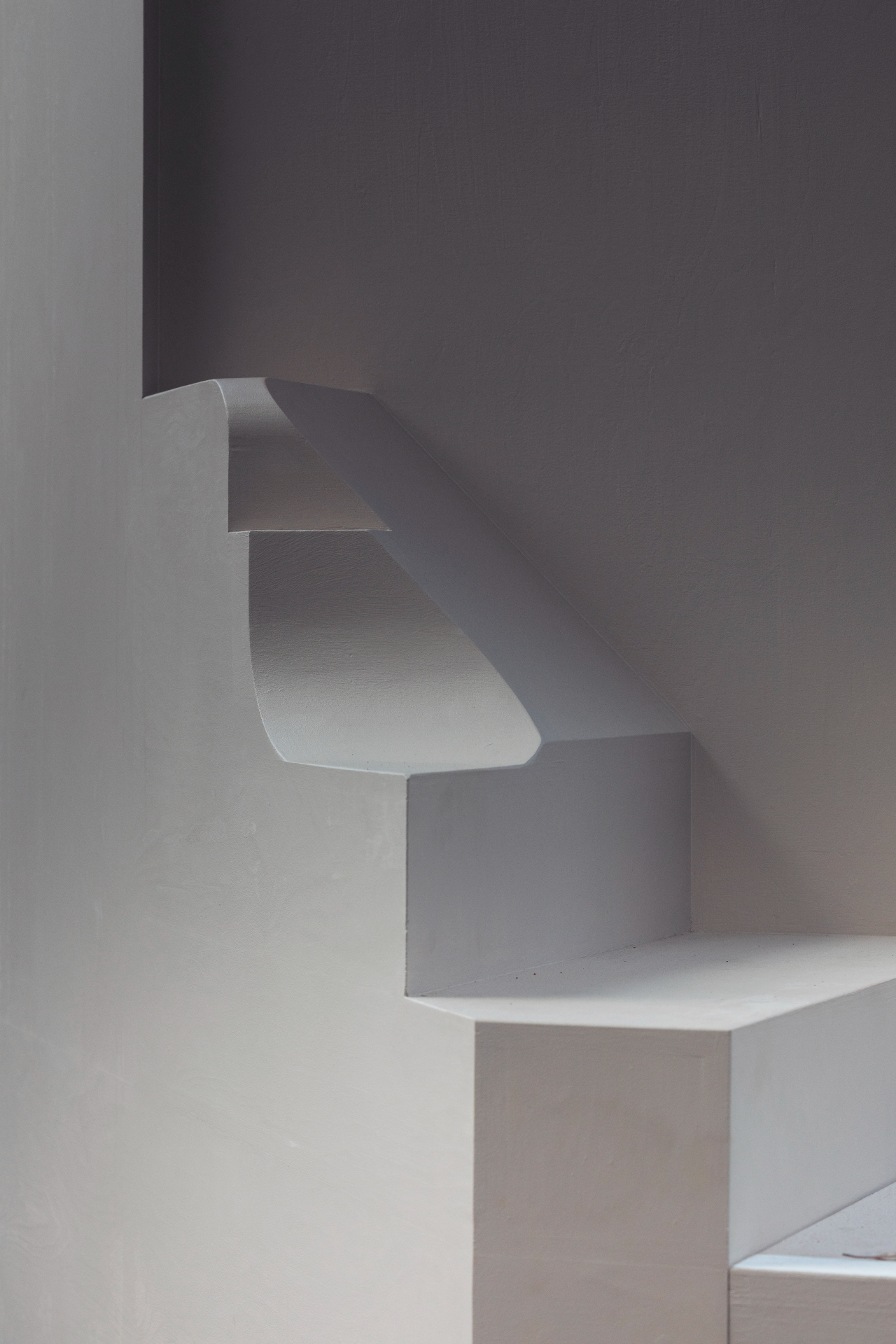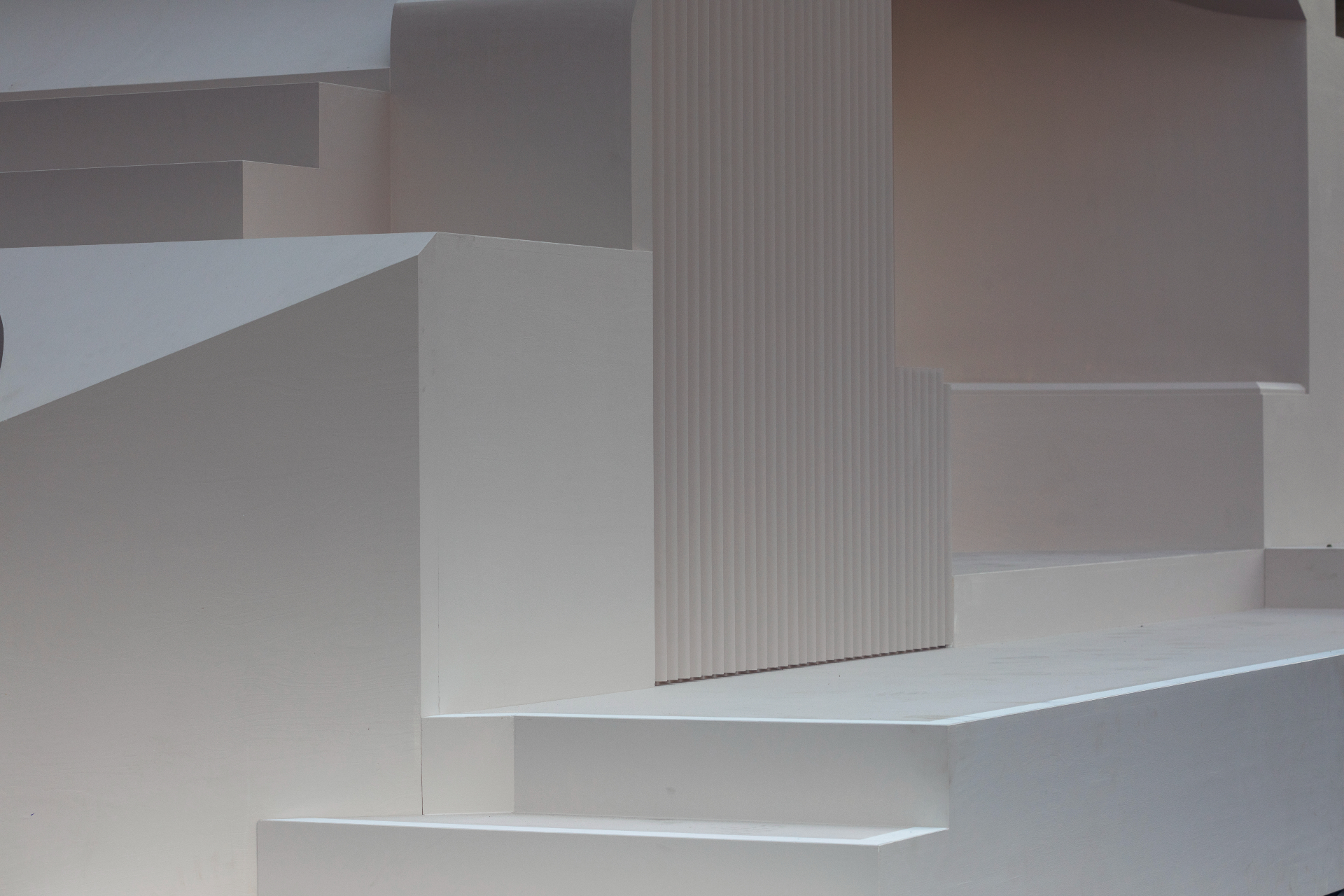Notting Hill Carnival pavilion provides ‘a place to lime’ in London
A Notting Hill Carnival pavilion by Sumayya Vally and Alvaro Barrington draws on ‘the identities, mythologies, and rituals surrounding the Afro-Caribbean community'

Amidst the feather-lined outfits, dazzling performances, and bustling crowds at this year’s Notting Hill Carnival sat an elegant, tiered structure that provided a well-needed zone of respite. The publicly accessible Notting Hill Carnival pavilion was a powerful collaboration between South African architect Sumayya Vally and London-based artist Alvaro Barrington. ‘Centering around themes of belonging, the project speaks to the identities, mythologies, and rituals surrounding the Afro-Caribbean community,' says Vally.

After meeting Vally at the 2021 Serpentine Pavilion last year, Barrington approached the co-founder of Counterspace to design a carnival scheme that produced the same sense of community that her Hyde Park structure achieved. ‘When I saw Sumayya’s pavilion, I was deeply moved. There was a strong feeling of freedom that flowed through the space,' says Barrington.
Charged with designing the structure, Vally researched key moments, spatial conditions, and groups that led Claudia Jones to establish Europe's largest street festival in 1958 – the Caribbean Carnival event, which later evolved into the annual Notting Hill Carnival. Two notable buildings that Vally studied were the historic Mangrove restaurant, which was an important symbol of resistance for the Afro-Caribbean community in Notting Hill, and the former church-turned-community hub, The Tabernacle. ‘For this project, we also looked at important Caribbean characters, traditions, and cultures, while honouring expansive geographies,’ says the architect.

Nestled on Great Western Road, next to the judging zone on Sunday 28 August and Monday 29 August 2022, the stepped sculpture formed a place where people could take a break as revellers paraded the streets of West London. ‘The idea of resting is such a powerful invitation. This pavilion is a place for you to lime,’ says Barrington. In the Caribbean ‘liming’ or ‘to lime’ is a phrase used to describe people hanging out, chatting, and taking it easy. While many may have needed a break from the action, that isn't the only purpose the structure serves. The form also works as a humble performance platform, a backdrop for a stage, or a shaded retreat from the summer sun.
The structure consists of interlocking plywood elements; ‘We wanted to use materials and construction logic that were tied to the Caribbean and the language of its regions,’ says Vally. Here, the traditional elevated wooden homes of Barbados, Guyana, and Jamaica, with their steps and raised porches, come to mind. Towering 3m above the road, the triangular pavilion was originally installed incompletely. During the opening parade, community members finished the mountainous building by assembling the final pieces after their procession. This process is a nod to different identities coming together during Notting Hill Carnival. ‘I wanted the structure to have something of diasporic logic in how it works. So, we decided to have parts that can live separately but have moments where they can come together.’

For Vally, one of the starting points for the project was a poignant photo of a woman carrying an item on her head during a Candomblé ceremony on the beach of Copacabana, Brazil. ‘In this image, the woman is honouring her ancestors. The object on her head can be likened to a small shrine for those that came before her,’ says Vally. ‘With this project I wanted to create something that honours the elders who were integral in making this part of London home for others.’
The pavilion forms part of a larger project that will consider different forms of living. ‘The impetus for this was always about immigration and why people leave their homes to go to new lands,’ says Barrington. Moving forward, the duo aim to use culture to address the needs of communities. ‘The next part of the project is about homes and how you become acquainted with spaces,’ says Barrington. Through architecture, the pair aim to amplify the voices of people of the African Diaspora, celebrating linked histories of cultural production while also producing places to lime.
Receive our daily digest of inspiration, escapism and design stories from around the world direct to your inbox.




INFORMATION
Shawn Adams is an architect, writer, and lecturer who currently teaches at Central St Martins, UAL and the Architectural Association. Shawn trained as an architect at The Royal College of Art, Architectural Association and University of Portsmouth. He is also the co-founder of the socially-minded design practice Power Out of Restriction. In 2023, POoR won the London Design Festival’s Emerging Design Medal. Shawn writes for numerous international magazines about global architecture and design and aims to platform the voices of those living across the Caribbean, Asia, and Africa.
-
 Robert Therrien's largest-ever museum show in Los Angeles is enduringly appealing
Robert Therrien's largest-ever museum show in Los Angeles is enduringly appealing'This is a Story' at The Broad unites 120 of Robert Therrien's sculptures, paintings and works on paper
-
 The Wallpaper* style team recall their personal style moments of 2025
The Wallpaper* style team recall their personal style moments of 2025In a landmark year for fashion, the Wallpaper* style editors found joy in the new – from Matthieu Blazy’s Chanel debut to a clean slate at Jil Sander
-
 Tokyo’s most cinematic stay reopens as an exercise in architectural self-control
Tokyo’s most cinematic stay reopens as an exercise in architectural self-controlPark Hyatt Tokyo and Studio Jouin Manku demonstrate how design can evolve without erasing memory, balancing modernist heritage with contemporary comfort
-
 Arbour House is a north London home that lies low but punches high
Arbour House is a north London home that lies low but punches highArbour House by Andrei Saltykov is a low-lying Crouch End home with a striking roof structure that sets it apart
-
 A former agricultural building is transformed into a minimal rural home by Bindloss Dawes
A former agricultural building is transformed into a minimal rural home by Bindloss DawesZero-carbon design meets adaptive re-use in the Tractor Shed, a stripped-back house in a country village by Somerset architects Bindloss Dawes
-
 RIBA House of the Year 2025 is a ‘rare mixture of sensitivity and boldness’
RIBA House of the Year 2025 is a ‘rare mixture of sensitivity and boldness’Topping the list of seven shortlisted homes, Izat Arundell’s Hebridean self-build – named Caochan na Creige – is announced as the RIBA House of the Year 2025
-
 In addition to brutalist buildings, Alison Smithson designed some of the most creative Christmas cards we've seen
In addition to brutalist buildings, Alison Smithson designed some of the most creative Christmas cards we've seenThe architect’s collection of season’s greetings is on show at the Roca London Gallery, just in time for the holidays
-
 In South Wales, a remote coastal farmhouse flaunts its modern revamp, primed for hosting
In South Wales, a remote coastal farmhouse flaunts its modern revamp, primed for hostingA farmhouse perched on the Gower Peninsula, Delfyd Farm reveals its ground-floor refresh by architecture studio Rural Office, which created a cosy home with breathtaking views
-
 A revived public space in Aberdeen is named Scotland’s building of the year
A revived public space in Aberdeen is named Scotland’s building of the yearAberdeen's Union Terrace Gardens by Stallan-Brand Architecture + Design and LDA Design wins the 2025 Andrew Doolan Best Building in Scotland Award
-
 The Architecture Edit: Wallpaper’s houses of the month
The Architecture Edit: Wallpaper’s houses of the monthFrom wineries-turned-music studios to fire-resistant holiday homes, these are the properties that have most impressed the Wallpaper* editors this month
-
 A refreshed 1950s apartment in East London allows for moments of discovery
A refreshed 1950s apartment in East London allows for moments of discoveryWith this 1950s apartment redesign, London-based architects Studio Naama wanted to create a residence which reflects the fun and individual nature of the clients